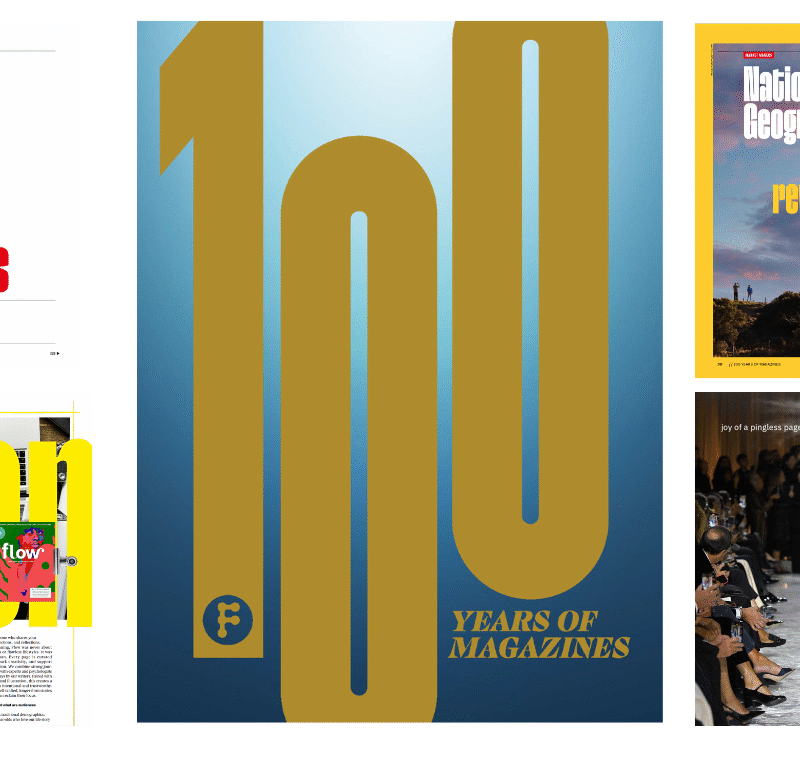FIPP100: An invaluable partner in the East
As FIPP celebrates its 100-year anniversary in 2025, it’s the perfect time to look back at the partnerships throughout the years that helped us get to this point.
Some of the most invaluable collaborations have been with National Associations (NAS) around the world, from Sweden and Spain to India, Brazil and Japan.
In the first of a series of interviews honouring the history and journey of FIPP and its members, we catch up with Akiko Nakakoshi of the Japanese Magazine Publishers Association (JMPA) to talk about how FIPP and the FIPP World Media Congress have impacted the JMPA over the years, and how the Japanese media landscape has evolved.
The JMPA’s members are all leading publishing companies, collectively accounting for over 80% of the total magazine circulation in Japan. As of April 2025, the association has 91 member companies – 82 regular members and nine supporting members. Approximately 700 magazine titles are published by regular members.
Tackling pressing issues like copyright protection and press freedom, JMPA, which was stablished in 1956, operates six committees: Editorial, Sales, Digital, Media Business, Production Environment and Business Management.

How has the FIPP World Media Congress impacted the JMPA over the years?
The Tokyo Congress held in 1997 marked the first-ever FIPP World Media Congress to take place in Asia. With a unified “All-Japan” spirit, not only the member publishers of the JMPA, but also numerous affiliated organisations and partners devoted a full year to the preparation of the event. It was a great honour for us to welcome more than 700 leading figures from the global publishing industry to Japan, and the experience provided us with many valuable insights. The final day’s gala party commenced with a ceremonial toast led by Yokozuna sumo wrestlers, creating a memorable and festive atmosphere in which participants were able to reflect on the three days of discussions and exchange. Since then, the FIPP World Media Congress has remained a matter of significant interest for all members.
In 2008, JMPA Co-hosted 1st Asia-Pacific Digital Magazine Media Conference with FIPP. Approximately 500 participants from 15 countries from Asia-Pacific region attended the Conference under the theme of ’Print and Digital Convergence.’ It was after this conference that JMPA decided to establish a new main committee to explore the digital issues among magazine publishing.
We have continued to organise delegations to attend the Congress each year. The contents of the conferences are compiled into formal reports, which are shared among all member companies and have become an important reference for understanding global trends in the publishing industry.




Above: photos from the 1st Asia-Pacific Digital Magazine Media Conference, celebrated in 2008




Above: photos from the 31st FIPP World Media Congress, celebrated in Tokyo in 1997
Have there been any significant changes to your FIPP membership and relationship over the years?
The JMPA will celebrate its 70th anniversary next year. We joined FIPP in 1966, merely a decade after our founding. Even at that early stage, we were eager to understand global trends and establish strong ties with publishing professionals around the world – a sentiment that remains unchanged to this day. Over the past century, the publishing landscape has continued to evolve, and the opportunity to share common challenges and solutions on a global scale has often provided us with both encouragement and inspiration. We sincerely look forward to continuing to learn together and to share our experiences with the international publishing community.
What does the Japanese magazine market look like at the moment? Which types of magazines have shown the most growth?
According to the statistics from 2022, there are currently about 2,400 magazine titles in the market across more than 60 categories. Among these, senior women’s magazines have been gaining the most support in recent years, with a top title boasting a monthly circulation of around 500,000 copies. A new generation of senior audience – those who used to get the latest information from magazines in their youth – has emerged. This publisher, while using print magazines as a gateway, has also expanded into diverse businesses such as mail-order and ecommerce services, event planning, and health check-up services.
One of the main aims of the JMPA is to progress and promote culture through publishing enterprise and contribute to social development. How do you achieve this?
Through the activities of its various committees, JMPA addresses issues of common concerns across the publishing industry. One such issue is copyright protection, particularly the fight against piracy. The association requests the use of manga characters for anti-piracy campaigns and seeks cooperation on social media to spread awareness. The association also serves as a liaison with the government, consolidating the publishing industry’s concerns and voicing opinions to relevant ministries and agencies. In recent years, Japan has been struck by numerous natural disasters. The association calls upon its members to donate various publications to regions affected by major earthquakes, hoping that print media can help restore strength and provide encouragement. Even challenges too large for a single company can be addressed through collective efforts, and the association plays a key coordinating role in such initiatives.

Madrid, Spain, 21-23 October 2025
What does the next era of media look like?
Hear from Time, The New York Times, Arab News, The Economist, Axel Springer, Condé Nast, Hearst, RocaNews… and many more.
It is also a mission of the JMPA to ensure the freedom of the press and the sound development of magazine publication.
Ensuring freedom of the press is a critical issue. Within the JMPA’s Editorial Committee, a subcommittee on editorial ethics handles cases where press freedom may be threatened. In such instances, the association may issue joint statements with other publishing organisations and meet with relevant government officials to gather information, which is then shared with member companies. The association also emphasises self-regulation, regularly reviewing magazines that may potentially violate publishing ethics. When problematic publications are identified, we contact the relevant publishers to provide guidance for future issues.
What are some of the biggest obstacles facing the Japanese magazine market?
The greatest challenge facing the industry is declining magazine sales. Since peaking in 1997, sales have fallen to half that level. In the past year, sales of print magazines were approximately ¥412 billion (US $2.85 billion). Meanwhile, digital publishing has grown to about ¥566 billion ($3.92 billion), though 90% of that consists of digital comics. Digital magazines account for only ¥8.6 billion ($59.51 million)and have yet to see significant growth. Finding a trustworthy digital platform to deliver magazine content remains a key area for exploration.
On the other hand, the association is addressing solvable structural issues in cooperation with industry stakeholders. For instance, in Japan, magazines are typically released on the same day within their categories. Since many employees are paid around the 25th of each month, publishers have historically preferred release dates around that time. However, this causes uneven distribution loads. The JMPA is working to even out logistics by encouraging publishers to consider alternative release dates.
Japan’s magazine cover highlights

Shogaku Ichinensei
Publisher: Shogakukan
Launched in 1925, Shogaku Ichinensei (First Grader in Japanese) celebrated its centennial issue in April 2025.
It is one of the oldest children’s magazine in Japan. This is the special centennial issue cover.
The monthly magazine aims to stimulate children’s curiosity with its diverse contents and bonus items.

Weekly Shonen Jump
Publisher: Shueisha
Launched in 1968, Weekly Shonen Jump is one of the best-selling comic weekly magazines in Japan.
This cover features ONE PIECE, the flagship title of Weekly Shonen Jump, as well as the comprehensive lineup of highly popular characters of the issue.
©️WEEKLY SHONEN JUMP 2025 No.22・23/SHUEISHA

VOCE
Publisher: Kodansha
Launched in 1998 with the tagline “Beauty is Fun,” VOCE is Japan’s first beauty magazine. Embracing the concept of enjoying beauty as entertainment, it has garnered strong support primarily from women in their late 20s to early 30s. As a result, it boasts the highest actual sales in its category.
How important do print publications remain in Japan?
In Japan, print publications still account for about 64% of total publishing revenue (including both print and digital), and they remain a major source of income for publishers. Print media is strongly supported by the audience. However, in the case of comics, digital sales surpassed print sales beginning in 2018.
How is the rise of AI affecting the development of magazines in Japan?
At this point, only a few publishers are using generative AI in magazine production. However, many companies are considering using AI to improve operational efficiency, and wider adoption is likely in the future. To successfully implement AI in content production, it is essential to avoid copyright infringement and misinformation. Some publishers have also started considering offering their own content as training data sets to generative AI companies, although this is still rare.
How positive are you about the future of the Japanese magazine market?
Over the past 10 years, the perception of magazines among Japanese publishers has evolved. Today, many publishers see magazines as symbolic representations of content brands and strive to create content that reflects those brands. While magazines were once seen solely as a platform for articles and topics, they are now becoming the starting point for diversified business models, including books, ecommerce, consulting, events, and licensing. In this sense, companies that produce high-quality content will continue to have a competitive advantage.
What are some of the future plans of the JMPA?
To ensure the sustainable development of the publishing industry, JMPA members collaborate horizontally to achieve shared goals. Currently, the most pressing concern among member companies is the impact of generative AI on the publishing business. The Japanese government is also considering new legislation on this issue. The JMPA will continue to monitor developments while asserting the importance of freedom of speech and expression, as well as the protection of intellectual property. Sharing up-to-date information on global content businesses, including publishing outside Japan, is another key role of the JMPA. We place great importance on learning from international events such as the FIPP World Media Congress and will continue to share these insights.









